BIFENTHRIN
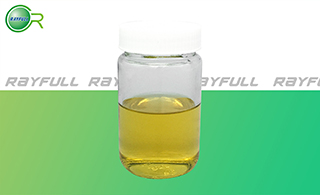 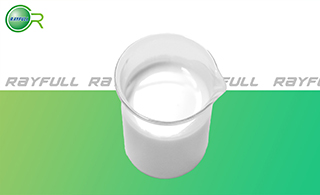 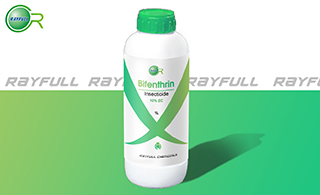 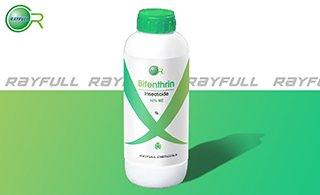 БӘұҪҫХхҘ БӘұҪҫХхҘ
Introduction: Bifenthrin is a pyrethroid acaricide/insecticide for use in a wide range of crops including non-cropped situations (lawns), athletic fields, ornamentals, residences and commercial buildings to control sucking and biting foliar pests, such as fire ants, blue grass weevil, armyworms, cutworms, centipedes, crickets, earwigs, millipedes, sowbugs, mole crickets, ticks, fleas, grasshoppers.
Common name: Bifenthrin
Another name: Discipline, Empower, Fanfare, Biphenthrin, Kappa-bifenthrin, Kappa-bifenthrine, (R)-Bifenthrin, (1R)-cis-Bifenthrin, Bifenthrine, Biphenate, Biphentrin, Capture, Talstar, etc.
Chemical name: 2-methyl-3-phenylbenzyl(1RS)-cis-3-(2-chloro-3,3,3-trifluoroprop -1-enyl)-2,2-dimethylcyclopropanecarboxylate
Empirical formula: C23H22ClF3O2
Structural formula:
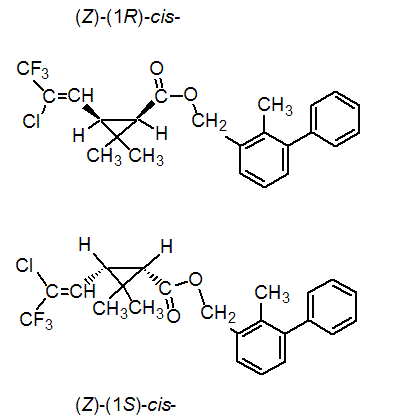
Mol. Weight: 422.88 g/mol
CAS No.: 82657-04-3
Specifications
Leading Bifenthrin supplier
Bifenthrin 5% EW
Bifenthrin 10% ME
Bifenthrin 100 g/L EC
Bifenthrin 250 g/L EC
Bifenthrin 95% TC
Packing:
BULK PACKING
Powder: 25kg/Bag, 25kg/Drum, 50kg/Drum etc.
Liquid: 200L/Drum, 20L/Drum, 10L/Drum ect.
SMALL PACKING
Powder: 1kg/Alu bag, 500g/Alu bag, 200g/Alu bag, 100g/Alu bag, 50g/Alu bag, 15g/Alu bag etc.
Liquid: 5L/Drum, 1L/Bottle, 500ml/Bottle, 250ml/Bottle, 100ml/Bottle, 50ml/Bottle etc.
Customerized Packing label
Bifenthrin FAO standard
Professional registration
HAZARDS IDENTIFICATION
Hazard statement(s)
H300: Fatal if swallowed.
H311: Toxic in contact with skin.
H331: Toxic if inhaled.
H370: Causes damage to organs.
H372: Causes damage to organs through prolonged or repeated exposure.
H400: Very toxic to aquatic life.
H410: Very toxic to aquatic life with long lasting effects.
Precautionary statement(s)
P260: Do not breathe dust/fume/gas/mist/vapors/spray.
P261: Avoid breathing dust/fume/gas/mist/vapors/spray.
P264: Wash ... thoroughly after handling.
P270: Do not eat, drink or smoke when using this product.
P271: Use only outdoors or in a well-ventilated area.
P273: Avoid release to the environment.
P280: Wear protective gloves/protective clothing/eye protection/face protection.
P301+P310: IF SWALLOWED: Immediately call a POISON CENTER/doctor/...
P302+P352: IF ON SKIN: wash with plenty of water.
P304+P340: IF INHALED: Remove person to fresh air and keep comfortable for breathing.
P307+P311: IF exposed: call a POISON CENTER or doctor/physician.
P311: Call a POISON CENTER or doctor/...
P312: Call a POISON CENTER or doctor/... if you feel unwell.
P314: Get medical advice/attention if you feel unwell.
P321: Specific treatment (see ... on this label).
P322: Specific measures (see ...on this label).
P330: Rinse mouth.
P361: Take off immediately all contaminated clothing.
P363: Wash contaminated clothing before reuse.
P391: Collect spillage.
P403+P233: Store in a well-ventilated place. Keep container tightly closed.
P405: Store locked up.
P501: Dispose of contents/container to ...
Supplemental Hazard Statements: none
MAMMALIAN TOXICOLOGY
Acute toxicity: 1) Acute oral LD50 for rat: 54.5 a.i.mg/kg. 2) Acute dermal LD50 for rat: > 2000 a.i.mg/kg. 3) Acute inhalation LC50 for rat (4 h): 1.01 a.i.mg/l. 4) Skin irritation: Non-irritant to skin (rabbit). 5) Eye irritation: Non-irritant to eye (rabbit). 6) Skin Sensitization: Non-sensitive (Guinea Pig).
NOEL: (1 y) for dogs 1.5 mg/kg daily. Non-teratogenic in rats (2 mg/kg daily) and rabbits (8 mg/kg daily).
ADI: 0.015 mg/kg b.w./day [Dog, SF=100]
Classification:
Toxicity class WHO (a.i.): II (Moderately hazardous)
US EPA Classification (formulation): II (Warning - Moderately toxic)
EC Risk Classification: Carcinogen category 3: R40; T - Toxic: R25, R23; Xn - Harmful: R22, R48; N - Dangerous for the environment: R50, R53
ECOTOXICOLOGY
Effect on birds: Acute oral LD50 for Bobwhite quail is 1800 a.i.mg/kg. Effect on fish: Acute LC50 (96 h) for Rainbow trout is 0.00026 a.i.mg/l. Effects on aquatic invertebrates: Acute EC50 (48 h) for Daphnia magna is 0.00011 a.i.mg/l. Effects on algae: Acute 72 hour EC50 for Scenedemus subspicatus is 0.822 a.i.mg/l. Effects on bees: Contact acute (48 h) LD50 is 0.015 a.i.ҰМg/bee, oral acute (48 h) LD50 is 0.1 a.i.ҰМg/bee. Effects on earthworms: Acute 14 day LC50 is >8.0 a.i.mg/kg.
ENVIRONMENTAL FATE
Bifenthrin's production may result in its release to the environment through various waste streams; its use as an insecticide/acaricide will result in its direct release to the environment. If released to air, a vapor pressure of 1.34ЎБ10-8 mm Hg at 25 deg C indicates bifenthrin will exist in both the vapor and particulate phases in the atmosphere. Vapor-phase bifenthrin will be degraded in the atmosphere by reaction with photochemically-produced hydroxyl radicals; the half-life for this reaction in air is estimated to be 4 hours. Particulate-phase bifenthrin will be removed from the atmosphere by wet and dry deposition. Pyrethroids such as bifenthrin absorb light at wavelengths >290 nm; therefore, bifentrhin may be susceptible to direct photolysis by sunlight. If released to soil, bifenthrin is expected to have no mobility based upon a Koc of range of 8,387 to 14,332. Volatilization from moist soil surfaces is expected to be an important fate process based upon an estimated Henry's Law constant of 1.0ЎБ10-6 atm-cu m/mole. However, volatilization from moist soil surfaces is expected to be attenuated by adsorption. Bifenthrin is not expected to volatilize from dry soil surfaces based upon its vapor pressure. Using soils typical of Australia, bifenthrin, present at a concentration of 4.5 mg/kg and incubated for 24 months exhibited half-lives of 1332 to 1410 days, indicating that biodegradation is not an important environmental fate process in soil. If released into water, bifenthrin is expected to adsorb to suspended solids and sediment based upon the Koc. The compound is very stable in aquatic environments indicating that biodegradation is not an important environmental fate process in water. Volatilization from water surfaces is expected to be an important fate process based upon this compound's estimated Henry's Law constant. However, volatilization from water surfaces is expected to be attenuated by adsorption to suspended solids and sediment in the water column. The estimated volatilization half-life from a model pond is 62 years if adsorption is considered. A log BCF of 3.8, corresponding to a BCF of 6,100 suggests that bioconcentration in aquatic organisms is very high. Bifenthrin was reported to be stable to hydrolysis at pH 5, 7, and 9 at 25 deg.
Usage: Insecticide and acaricide reported by H. J. H. Doel et al. (Meded. Fac. Landbouwwet. Rijksuniv. Gent, 1984, 49, 929) and A. R. Crossman et al. (ibid., p. 939). Introduced by FMC Corp. Acts on the nervous system of insects, disturbs the function of neurons by interaction with the sodium channel.
Application: Contact and stomach action. Effective against a broad range of foliar pests, including Coleoptera, Diptera, Heteroptera, Homoptera, Lepidoptera and Orthoptera; it also controls some species of Acarina. Crops include cereals, citrus, cotton, fruit, grapes, ornamentals and vegetables. Rates range from 5 g/ha against Aphididae in cereals to 45 g/ha against Aphididae and Lepidoptera in top fruit.
| 






